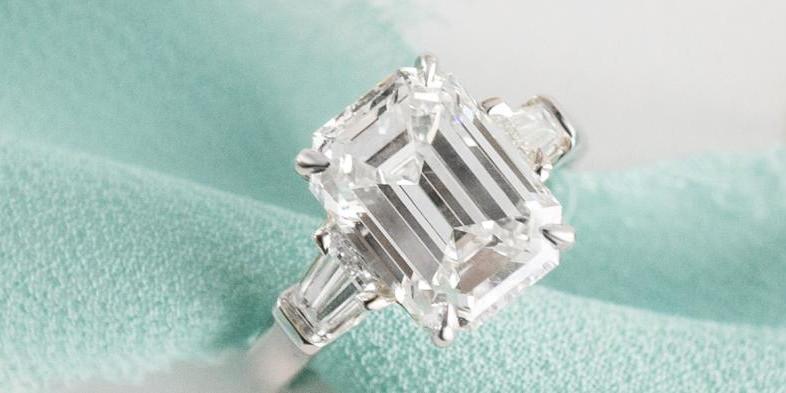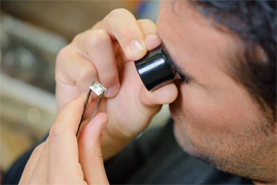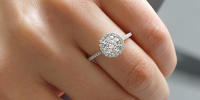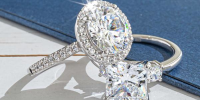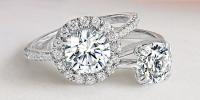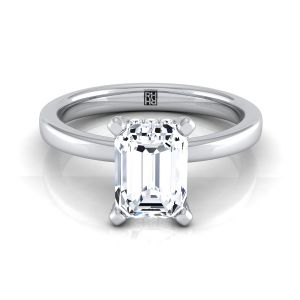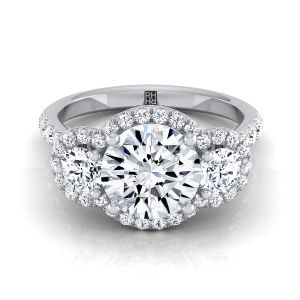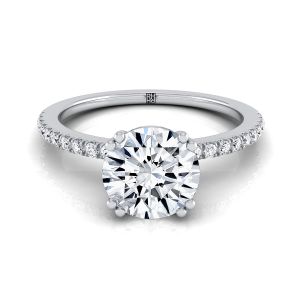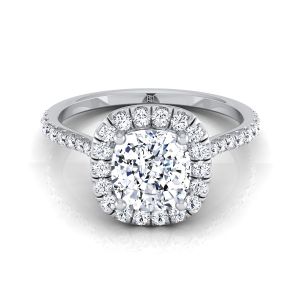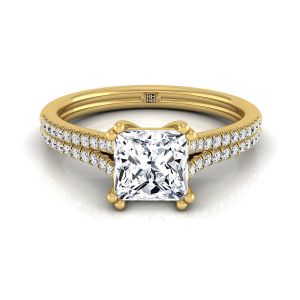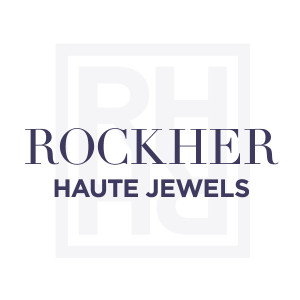It happens all the time. We are talking to our customers and they begin to sound confused. We get it! So. Much. Jargon. Even after you’ve studied up on the 4Cs, you’ll continue to discover jewelry words that mean something entirely different than what the dictionary says.
No worries: we speak jewelry fluently and can translate. Here are some common words that mean something totally different in jewelry and what we actually mean by them.
Girdle
When we talk about a thick girdle, there is no industrial spandex involved. A girdle is the edge of a diamond. A thick girdle means the edge is wide (and, appropriately, is in fact hiding some extra weight!) A thin girdle or knife’s edge girdle is so thin it might easily chip. So you are looking for something in between thick and thin.
Table
This one isn’t being set for dinner. The table is the big facet in the middle of a diamond when it is face up. It’s like a viewport into the heart of the sparkle.
Eye Clean
All our diamonds are clean. We use ultrasonic cleaners to keep them sparkling! But eye clean is something different. Diamonds are clarity graded under 10 times magnification. A diamond that is eye clean may have inclusions but they can’t be seen by the naked eye when the diamond is in the face-up position. Diamonds that have a VS clarity grade are almost always eye clean. Sometimes SI diamonds are too: we continually look for these because they are a good value. So if we tell you a diamond is eye-clean, we basically mean you will love it.
Shank
Prison weapon anyone? Nope. When we talk about a shank, we just mean the band part of a ring like a woman’s engagement ring that has a center stone. It’s the part that goes around your finger. Because we are not a prison jeweler. Is that a thing?
Head
This is the part of a ring that holds the stone. You don't put a hat on it. Unless you like hats better than diamonds? Are hats a girl’s best friend? Are engagement hats going to be the next big thing? Keep us posted.
Gallery
This is the area of the ring under the stone that is visible from the side. Sometimes it’s very detailed. But there are no paintings or anything.
Bow Tie
A bow tie is an optical effect in fancy shape diamonds like ovals and pear shapes where there is a dark area that kind of looks like something old-timey barbershop quartets would wear. Basically, it’s not a good thing in diamonds either.
Pave
This one almost makes sense. You might talk about paving a street. When we talk pavé, it means to cover a piece of jewelry in small diamonds with no space in between kind of like little cobblestones. And it’s pronounced the French way: pav-vay. Because we’re fancy. And we love covering things with diamonds.
Pointer
Most diamonds on the market are less than a carat. Because we don’t like decimals any more than you do, we don’t walk around talking about “point-zero-one carat” diamonds or “point-one-two carat” diamonds all the time. We multiply by 100 and use a new unit of measurement: the point. So now everything it’s easy! We set a ring with “one pointers” instead of 0.01-carat diamonds or twelve pointers instead of 0.12-carat diamonds.
Window
Everyone wants a window in their corner office. But, trust us, no one wants a window in their gemstone. A window is an area in the center of a gem where nothing is reflected back, the light just goes right through. That means it doesn’t sparkle in that area: it’s dead and lifeless. Sorry, we don't do windows.
Pique
When we say pique, we aren’t annoyed. Well, maybe a little bit. It’s not good news: pique is an old term for diamonds with eye visible inclusions. This is another term that comes from French: it’s pronounced “pee-kay,” not “peek.” Labs in Europe like the HRD use pique officially to refer low diamond clarity grades: P1, P2, and P3 have increasingly more eye-visible inclusions. Because we really don't like these kind of ugly diamonds we get it over with quickly with an abbreviation and write pique as PK. If you see “PK goods” it means diamonds that have eye-visible inclusions. Trust us, you don’t want them in your engagement ring.
Hearts & Arrows
Diamond cut is the most important of the 4Cs when it comes to beauty. A well-crafted diamond dances with light. You may have heard about ideal cut diamonds: diamonds cut to the proportions that maximize light return. Hearts and arrows diamonds are cut with even more precision because they have enhanced symmetry as well as proportions. You can see the effects of optical symmetry by looking at the diamond through a special red light viewer. The reason why these diamonds are called hearts and arrows is because in the viewer they show a pattern of eight hearts when viewed upside down and eight arrows when viewed from the top. And it actually is kind of romantic to have Cupid’s arrow in your engagement diamond, don't you think?
Make
When we talk about the diamond make, we mean cutting proportions and craftsmanship. A diamond with a good make is well-cut. Does that make sense?
Spread
You want mayo on that diamond? No, that’s not it. When we talk about spread, we are talking about taking up space on your finger not n your sandwich. A spread diamond is bigger than normal. Normal is 6.5mm for a one-carat diamond so a 7mm one-carat diamond is spready. Unfortunately, they don’t tend to be the most brilliant. And we hate mayo.










